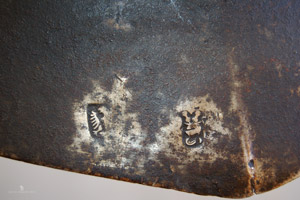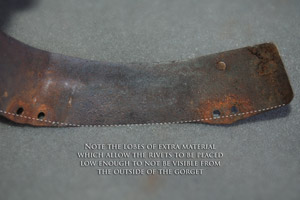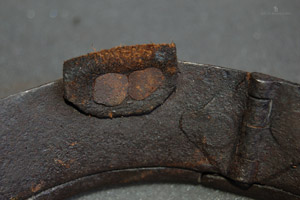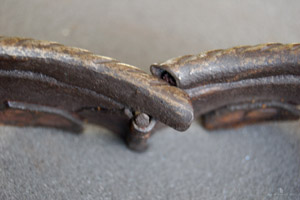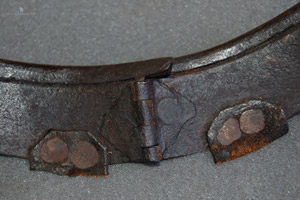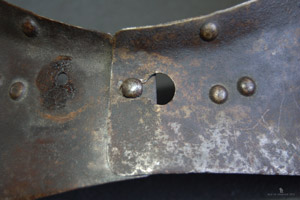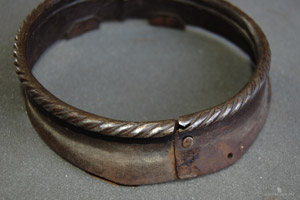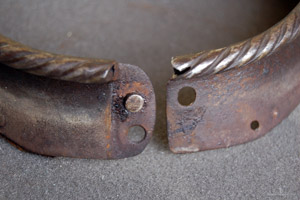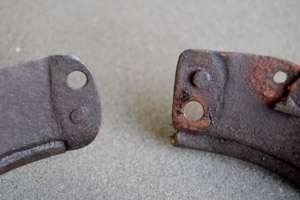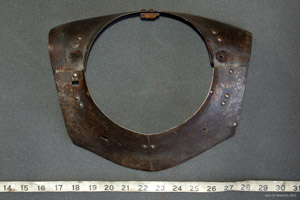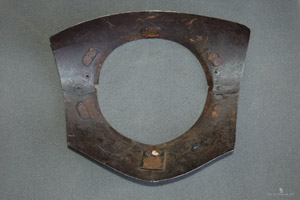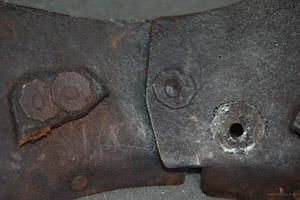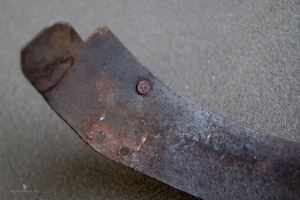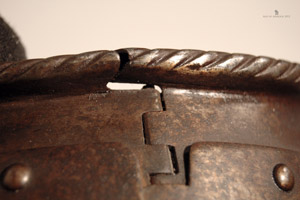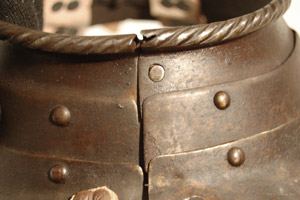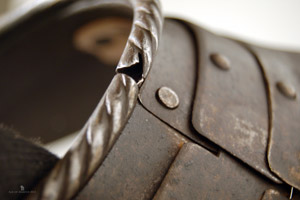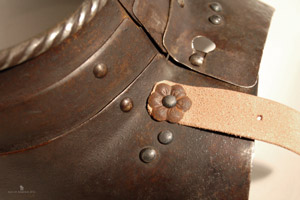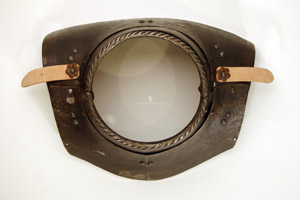16th century gorget photo essay
Introduction
Several years ago I was commissioned to repair a 16th century black and white armour. The harness is a mix of components manufactured throughout the second half of the 16th century by several different armouries.
While repairing the armour I took many photos and notes. Because finding measurements and detailed photos of historical armour is so difficult, I thought I should share this information with other armourers and enthusiasts. My hope is that these photos can help answer some of the same questions about armour design and construction I struggled with when I first started making armour.
As time permits I hope to create more photo galleries like this one covering the other pieces of the armour.
About the gorget
This is an articulated gorget is from the mid 16th century. Its thickness varies between 0.031 and 0.054 inch and weighs approximately 1.75 lbs.
Note that when the gorget was made it did not likely have the two leather straps for hanging pauldrons or spaudlers. There were straps when the gorget arrived at my shop but they were likely added in the 19th or 20th centuries. The keyhole slot on the front-right of the main plate of the gorget, and the additional rivet holes along the edges are evidence that the gorget originally had either additional small lames that would extend partially over the shoulders or fully integrated spaudlers which are now missing.
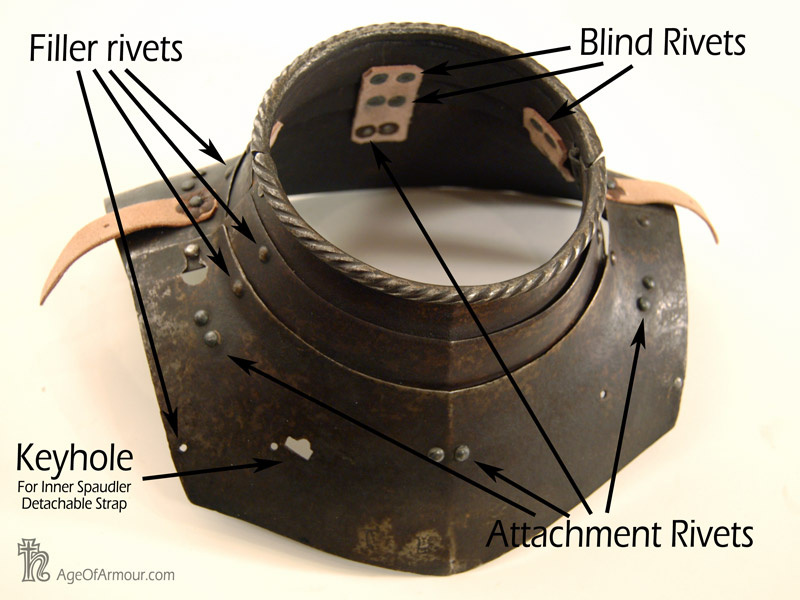
Those who are new to armour making may want to examine how the articulation works and note the use of decorative, filler rivets. Many of the rivets do not actually connect to anything. These are particularly deceptive to those getting started in making armour because, if you were to connect some of these rivets to the underlapping lames, the gorget would no longer articulate.
The articulation of the neck is actually handled solely by leather straps which are blind riveted on the inside of the collar and lames then visibly riveted onto the main plates of the gorget.
Another interesting detail that is commonly missed on modern reproductions is how the rear lame has notches removed at the ends where it is overlapped by the front lame. This allows the two plates to still overlap for stability but, by removing a portion near the top allows the front lame to sit closer to the collar plates, creating a tighter, cleaner appearance.See this image illustrating what I mean.
The Photos
Click on any image to see it full size.
